The Black Copper Maran is a large and attractive breed of chicken that has become much more popular in recent years. They are named for their distinctive mix of black and copper plumage, making them easy to spot. Whether you want chickens for meat, eggs, or pets, this breed should work out nicely.

This article will cover
- Black Copper Maran Overview
- Background and History of Black Copper Maran
- Black Copper Maran Breed Standard
- Personality and Temperament
- Black Copper Maran Egg Laying
- Black Copper Maran Health Issues and Care
- 4 Tips for Raising Black Copper Maran
Black Copper Marans Overview
| Feature | Black Copper Marans Chicken |
| Purpose | Egg-laying |
| Egg Color | Dark Brown |
| Egg Size | Large |
| Broodiness | Moderately Broody |
| Heat Tolerance | Yes (Moderate) |
| Cold Tolerance | Yes |
| Comb Type | Single Comb |
| Egg Production | About 150 to 200 eggs per year |
| Chicken Skin Color | White |
| Life Span | 7-8 years |
| Adult Weight | Hen: 6.5-7.5 lbs, Rooster: 7-8 lbs |
| Backyard Friendly | 4/5 |
History of Black Copper Marans
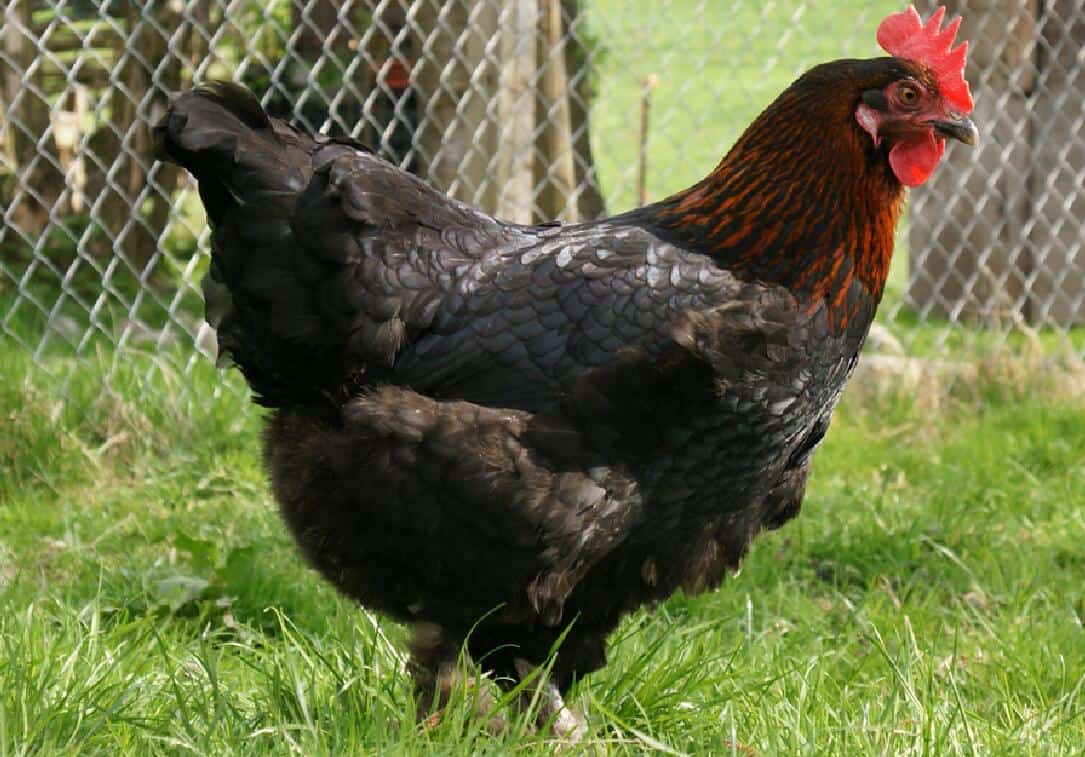
The breed is named for its origins in the Marans and La Rochelle communities, which are found in western France. The original chicken of this type was known as the “poule de Marans,” and it was very different from the nine recognized varieties that we see today.
These birds were known as “swamp chickens” because of the swampy area in which they originated. No one knows exactly when this breed first came about, but we do know that these birds became famous for their deep reddish-brown eggs.
In the early nineteenth century, they were crossed with gamecocks that sailors brought from Indonesia and India.
At this point, the breed was known as the “Marandaise Fowl.” Of course, gamecocks are not well-suited for most purposes (other than fighting), so the breed needed further modification.
By crossing a Marandaise Fowl with a Croad Langshan chicken (and several others, to lesser extents), they created the distinctive breed of chicken that we know today.
This chicken enjoyed a great upsurge in popularity during the 1920s and 1930s. In fact, author Ian Fleming named the egg of the Black Copper Maran as the favorite of James Bond. Naturally, this helped to boost the popularity of the breed even more.
Unfortunately, this chicken was hit very hard by the chaos and bloodshed of World War Two. Large parts of the French countryside were decimated during the war, and the Marans chicken nearly went extinct.
Thankfully, these birds have a certain cultural significance to the French, which led to their successful conservation.
The French Department of Agriculture started a breeding program in the post-war period, which successfully rescued the Black Copper Marans chicken (and all the other recognized varieties of Marans chicken) from extinction.
Through selective breeding, they were able to increase egg production to about 200 eggs per year. This breed, thanks to these efforts and its unique characteristics, seems to have a bright future.
Black Copper Marans Breed Standard
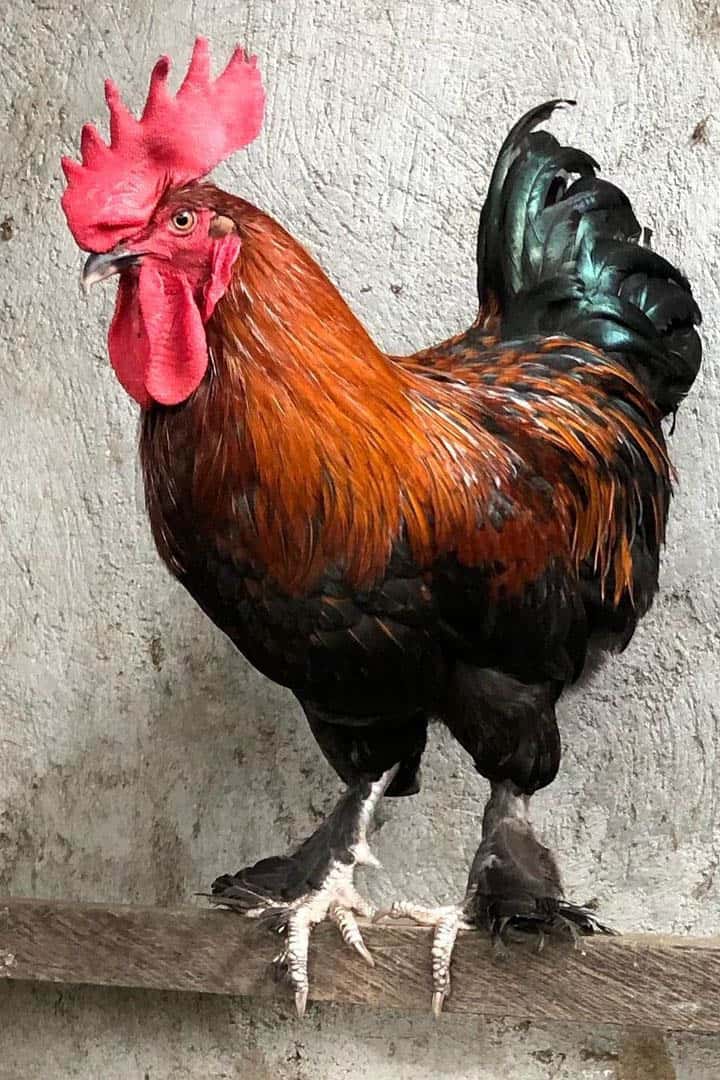
As we mentioned earlier, this breed was named for its black and copper plumage, by which it can easily be recognized.
Sometimes, the black feathers will have an attractive green iridescence when seen in full sunlight. The American Poultry Association first recognized this breed in 2011, as it is a relative newcomer to the American scene.
The APA classifies all Marans as large fowl, which makes sense. These birds can get as large as eight pounds, putting them on the larger side of the average. For this reason, they can make for a great meat chicken.
The hens tend to be a little smaller (about six to six and a half pounds, on average), but should still be large enough for just about anyone. Here are the French standards for reference.
When it comes to leg ring diameter, the cock will normally measure about 22 millimeters, while the hen will average about 20. As you can see, there’s not a big difference here.
Breed standards also say that this bird should be long and strong, with the saddle slightly raised. The body forms a wide, elongated “V” and the shoulders should be wide. The feathers of the hackles are long and copper-red.
Personality and Temperament
This breed is known for having a lot of variation in its temperament. This is mostly due to its history of hybridization (described above). The DNA of this chicken contains both the genes of a hardcore fighting chicken and also those of a docile barnyard chicken.
That being said, most of the gamecock was bred out of these birds a long time ago. Thus, you don’t usually have to worry about your Black Copper Marans chicken fighting with other birds. The roosters will scuffle a little bit from time to time, but it probably won’t develop into anything serious.
These birds aren’t commonly used as companion animals, but that doesn’t mean they can’t make a good pet. Just be aware that they aren’t commonly used for this purpose. If you want a pet chicken, you might have an easier time with something else.
Given its active nature, as a large bird, the Black Copper Marans will do best in a free-range environment. They can deal with a certain amount of confinement, but they tend to be more productive when they can roam a little bit.
Those who keep these birds have often described them as being extremely clean. They will usually avoid soiling their laying boxes, or any other area that they might use. They generally aren’t willing to sit in their own filth like some other breeds of chicken.
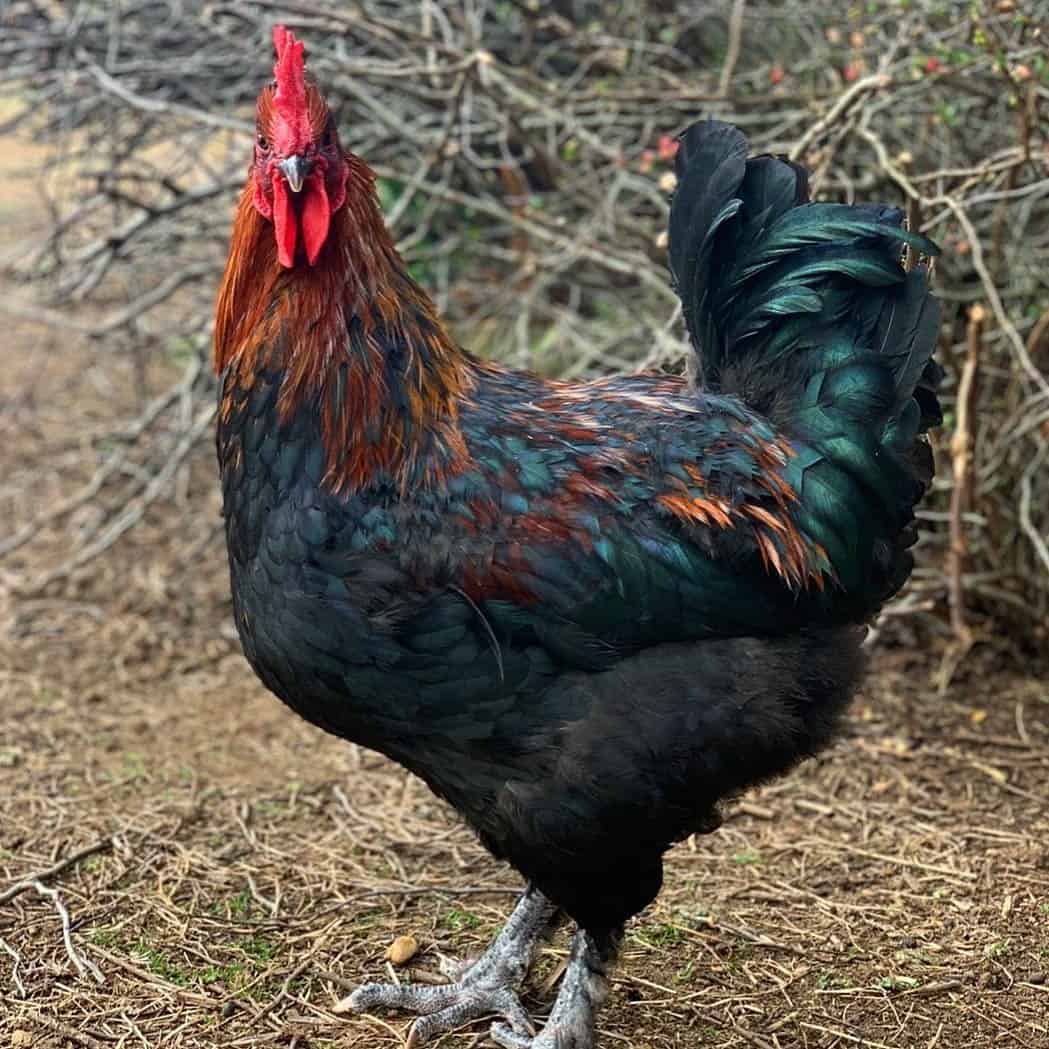
Black Copper Marans Egg Laying
As you might already know, the most distinctive feature of this breed is its rich chocolate-brown egg. This egg will vary in hue just a little bit, so don’t be too concerned if you get some variation.
The source breeds for this chicken (like the Marandaise Fowl) were said to produce very red eggs, but the modern Marans egg is more like a ruddy chocolate brown.

We also mentioned that this chicken has been known to lay up to 200 eggs a year. While this number is definitely possible, you should remember that 200 eggs would be a maximum figure.
You probably won’t get quite that many, but you should get plenty of eggs from this chicken. These eggs have a rich, creamy flavor that sets them apart from other eggs, which might be why Mr. Bond enjoys them so much.
One interesting thing about the Black Copper Marans chicken is the pigment that it uses in the shells of its eggs. This pigment, known as porphyrin, is what gives these eggs their distinctive color.
Thus, a hen that lays a larger number of eggs will have less pigment in each one. As a result, the eggs will gradually get lighter in color as the year progresses.
Health Issues and Care
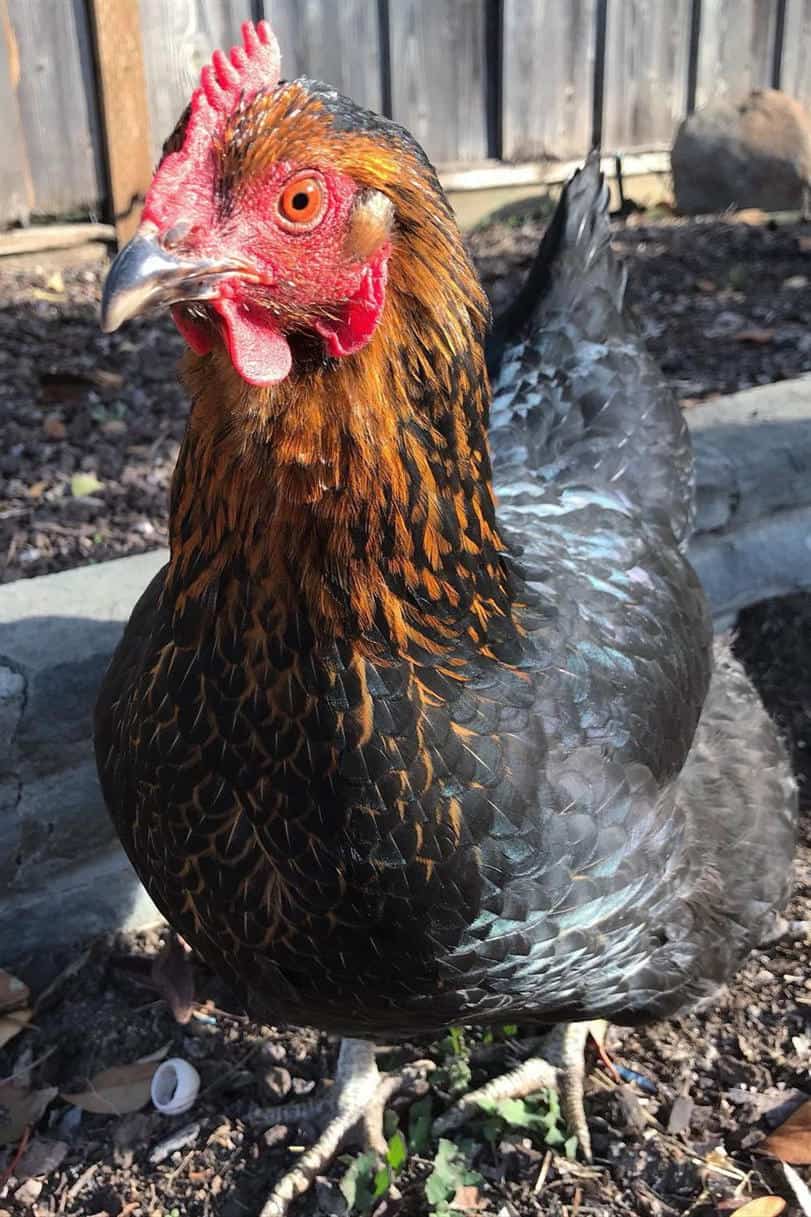
You will likely be pleased to know that this bird is not very vulnerable to disease. While any animal can get sick, these birds are known for being very hardy. This might have something to do with their swamp origins, as swamp animals have to deal with filthier conditions.
On the other hand, this bird might be resistant to diseases because of the fact that it has clean habits. They have an aversion to fecal matter that is kind of uncommon for a chicken. Good hygiene is always related to ones’ risk of disease, so we tend to think this is the explanation.
As for common health issues, this breed might suffer from any of the common maladies that another chicken might contract. In this particular area, the care of a Black Copper Marans chicken is not much different than that of other breeds.
This bird is known for its ability to tolerate a wide variety of temperatures, which makes sense for a breed that comes from a temperate zone. Unless your environment is extremely hot or cold, they will be fine. Still, you should know that this breed is a poor winter layer.
4 Tips for Raising Black Copper Marans
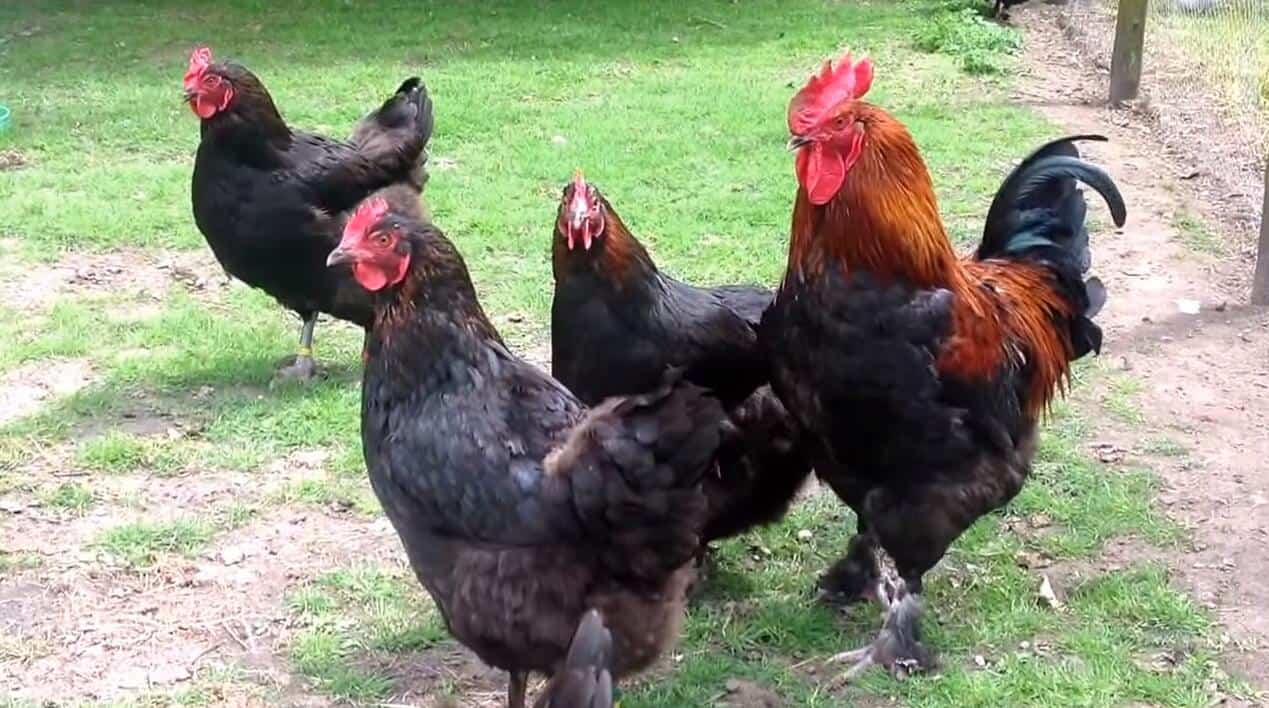
For our first tip, we should mention the importance of selective breeding. This is a relatively new breed and is still being refined. For this reason, you should be careful about which of your birds are allowed to pass on their genes.
We already mentioned the French government’s breeding program, which was mainly concerned with increasing their numbers and increasing their egg production. There is no reason that you shouldn’t continue the job that they started.
Second, you should be careful when buying this type of chicken. The color of their eggs will often change over time, so don’t judge from a photo. There are a few types of chicken with similar plumage, so look for the little details contained in the breed standard.
Third, try to give your Black Copper Marans chicken as much exercise as possible. When kept in close captivity, this chicken may tend to gain excessive weight.
Of course, those who are raising birds for meat might find this desirable. However, such a bird will be unhealthy, and that is never good for a meat animal.
Fourth, you should remember that this chicken will grow very quickly. When you buy chicks, it might be tempting to think that you have plenty of time to make room for the adult birds.
In most cases, that is not so. When buying Black Copper Marans chicks, you should give them the same amount of room that you would give an adult bird.
Why are Black Copper Marans so Expensive?
Now that we have gotten to know thi Only, for you to see that they can be quite pricey and rare. But why is that?
Rarity
The Black Copper Marans is a rarity even among chickens due to its smaller breeding population. Breeders of this particular breed put extra time and effort into their work, adding to the value of the birds while contributing entirely to their relatively high pricing ranges (and scarce availability).
On top of that, unlike other breeds of chickens, it lays distinctly dark brown eggs rather than traditional speckled ones. An aspect that is appealing for high-end restaurants, enough for some buyers to shed some money off for a bite.
Breeding Challenges
For breeders of Black Copper Marans, breeding to conform to desired standards is key. These birds typically attract a higher price due to their specific feather coloration, unique leg color, and body shape. Such traits are difficult for many breeders to reproduce consistently even via selective breeding practices.
This is especially important if you’re going to use your chicken for the show. Bird exhibitions follow a breed standard that dictates how your Black Copper Marans will be judged.
Conclusion
In conclusion, the Black Copper Marans is one of the most appealing options on the chicken market. While they may not be at the top of the list when it comes to size or egg production, they offer a docile, easy-to-manage bird that can serve a variety of needs.
We hope that you have enjoyed reading this article and that you will come back to read more of our work.

Joseph Hudson has been raising chickens for over 15 years. In 2018, he completed the Agriculture & Natural Resources program at Mt. San Antonio College. He currently raises over 1400 chickens on his 7.5-hectare farm. He keeps sharing his experience on raising healthy and happy chickens on Chicken Scratch The Foundry.
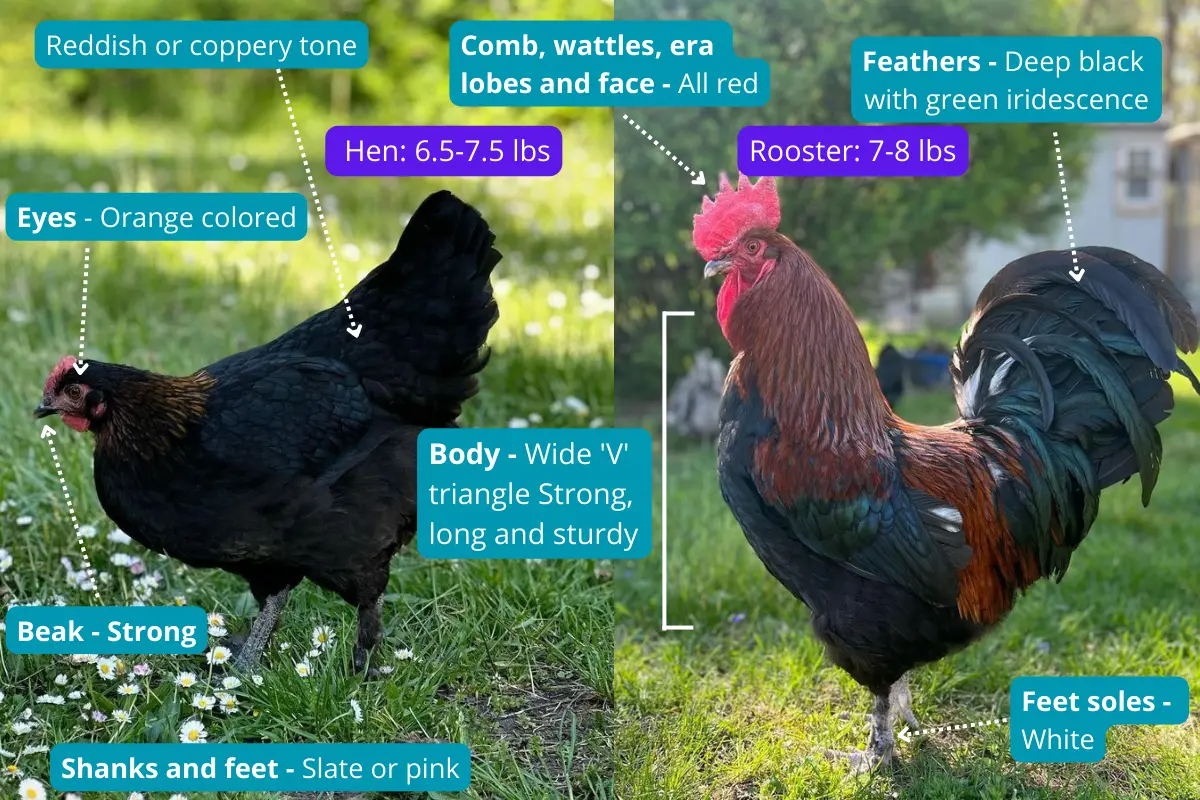







how to buy chicks of these chickens?
Thank you for reading our blog, we are sorry that we don’t sell any chicks. If you are in the United States, there are also many online sites that sell chicks and provide nationwide shipping.